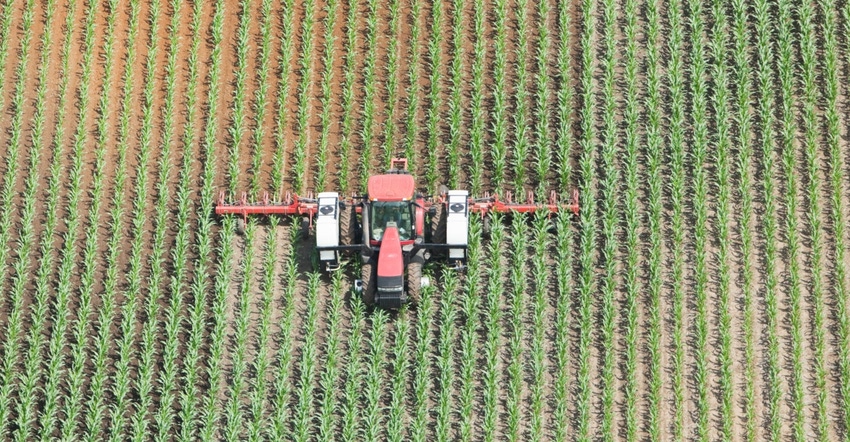
The United States International Trade Commission determined that there is a reasonable indication that imports of urea ammonium nitrate from Russia and Trinidad and Tobago materially injure the U.S. UAN industry and are allegedly subsidized and sold in the United States at less than fair value.
The investigation is being conducted in response to petitions filed by CF Industries Holdings, Inc., and its subsidiaries, Terra Nitrogen, Limited Partnership and Terra International. Under U.S. trade laws, a finding of injury to the domestic industry is a prerequisite for imposing antidumping and countervailing duties.
In 2018, Russia exported 1,227,252 short tons of UAN for a value of $186,097,918. In 2020, they exported just slightly less to the United States at 1,186,295 short tons, but the value was at $137,784,739.
In our August Farm Futures’ reader survey, over 92% of respondents anticipate higher nitrogen prices next year. Growers expect the biggest price increase to be seen in phosphate fertilizers as trade flows continue to adjust to the countervailing tariffs dispute between the U.S., Russia and Morocco.
Related: Farm Futures survey: 2022 profit outlook unchanged
In July, the Department of Commerce announced the initiation of antidumping duty and countervailing duty investigations of urea ammonium nitrate from Russia and Trinidad and Tobago.
As a result of the ITC’s affirmative determinations, the U.S. Department of Commerce will continue its investigations of imports of UAN solutions from Russia and Trinidad and Tobago, with its preliminary countervailing duty determinations due on or around Sept. 23, 2021, and its antidumping duty determinations due on or around Dec. 7, 2021.
If both agencies make affirmative final determinations – which typically takes approximately one year – then Commerce will issue antidumping and countervailing duty orders on UAN from Russia and Trinidad, which will remain in place for at least five years.
The Commerce Department notes in the Russia investigation there are 11 alleged subsidy programs, which include numerous tax programs, preferential lending and the provision of natural gas, natural gas extraction rights and phosphate mining rights for less than adequate remuneration. In the Trinidad and Tobago investigation, there are three alleged subsidy programs, which include multiple tax programs and a provision of natural gas for less than adequate remuneration program.
According to a recent Market Intel report from the American Farm Bureau Federation, economist Veronica Nigh states that given that UAN solutions account for 43% of nitrogen fertilizers, and nitrogen accounts for 59% of total fertilizer use, that means about 25% of operating costs can be attributed to UAN solutions. “Certainly, farmers would feel a significant increase in UAN solution costs in their bottom line,” she says.
The U.S. currently produces UAN fertilizer and imports this fertilizer from several countries, including Russia and Trinidad and Tobago. Russia and Trinidad and Tobago combined account for approximately 81% of UAN fertilizer imports, Nigh explains.
“If the proposed anti-dumping margins drive UAN fertilizer costs up between 169.96% and 391.65% for Russia and 158.81% for Trinidad and Tobago, plus the countervailing duties, production costs will rise accordingly for U.S. farmers who grow corn, soybeans, cotton, wheat and other crops for the next planting season and beyond,” she says.
Nigh explains over the last several years, fertilizer prices have risen considerably for all U.S. major field crops. USDA’s Economic Research Service is already projecting that fertilizer prices will rise 5% in 2022 over 2021, and that’s before the potential tariffs on UAN are factored in.
“If realized, this would mean that between 2018 and 2022, fertilizer prices will have increased by double digits for every major field crop in the U.S. Over this period, fertilizer prices will have increased by 16.5% for cotton, 16.6% for barley, 16.7% for oats, 17.1% for wheat, 17.6% for peanuts, 18.1% for rice, 18.6% for sorghum and corn and 18.9% for soybeans,” Nigh writes.
“The preliminary ITC decision is an important step towards leveling the playing field for U.S. UAN producers and their workers,” says Tony Will, president and chief executive officer, CF Industries Holdings, Inc. “CF Industries will continue participating actively in the ongoing investigations in order to restore fairness to our highly competitive industry and ensure that American UAN producers remain a reliable source of fertilizers for American farmers for years to come.”
About the Author(s)
You May Also Like






